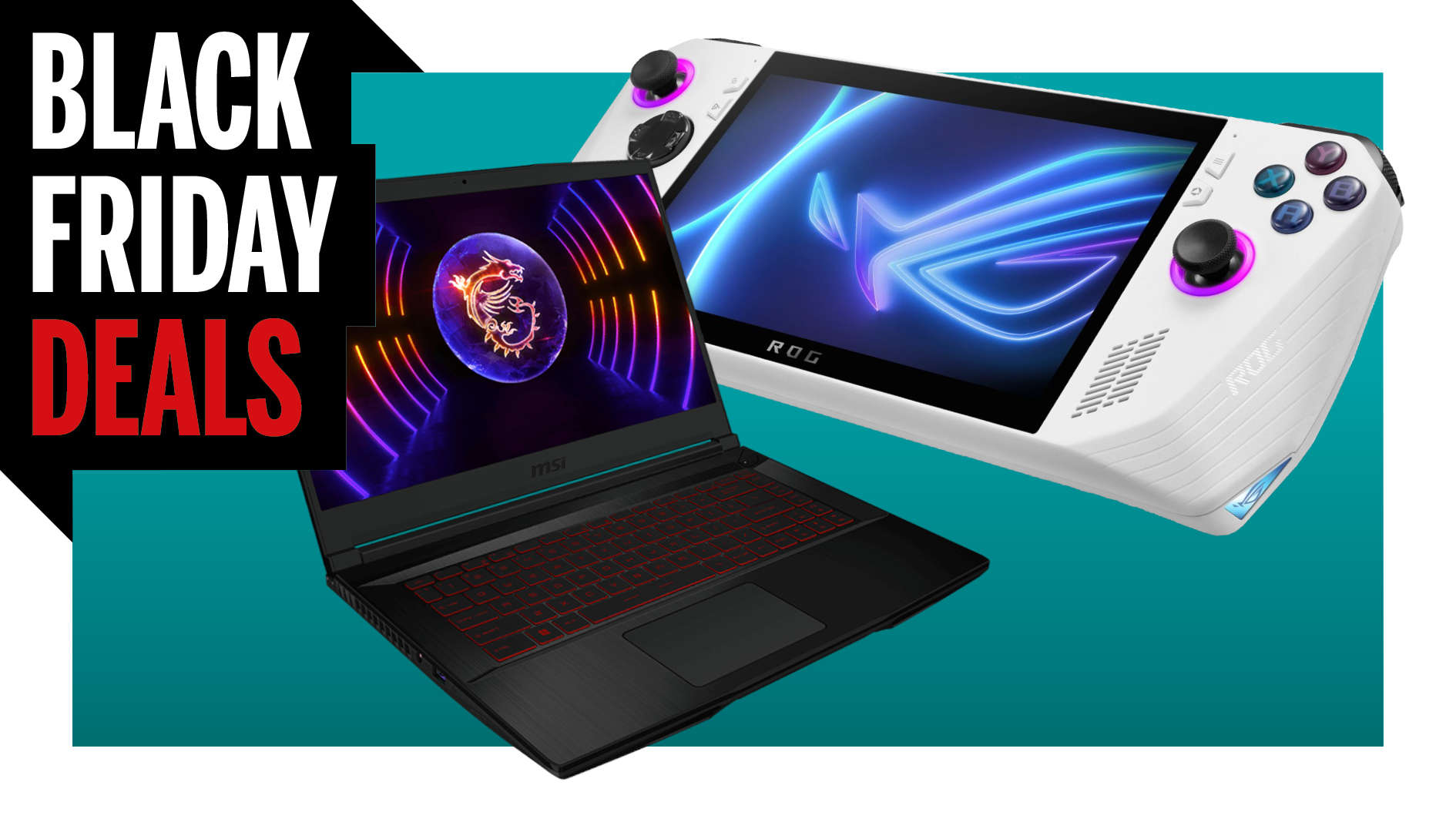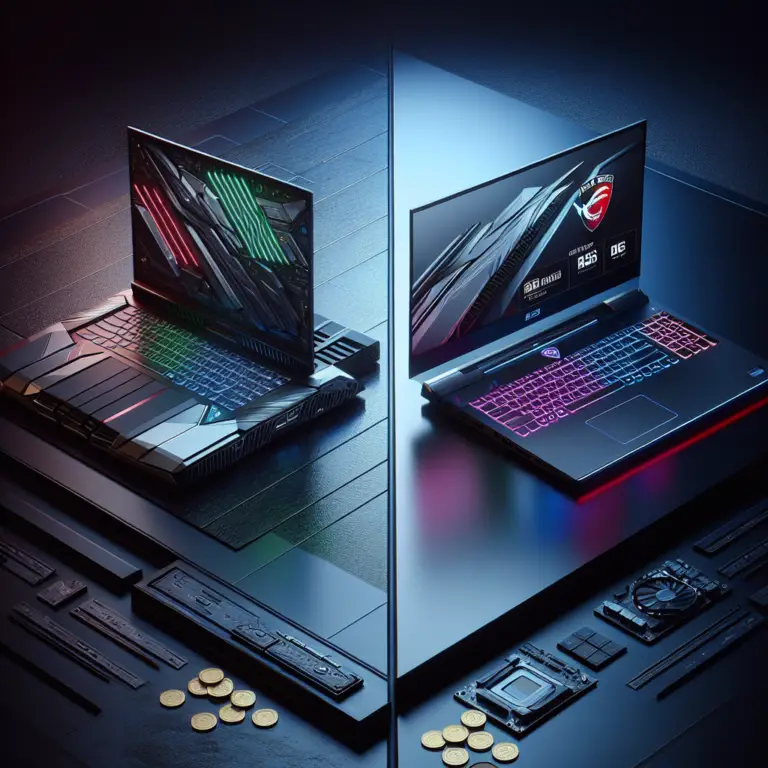Black Friday Showdown: Asus ROG Ally vs. MSI Thin GF63
The Black Friday sales have brought an intriguing dilemma to gamers: choosing between the ultra-portable Asus ROG Ally and the more traditional MSI Thin GF63 gaming laptop. With significant price drops, the Asus ROG Ally, originally priced at $699.99, now stands at $619.99, while the MSI Thin GF63 has been slashed from $899 to a tempting $599. The ROG Ally offers the convenience of a handheld gaming PC with a Ryzen Z1 Extreme processor and a 7-inch 120Hz display, while the MSI gaming laptop boasts an Intel Alder Lake-powered i5 12450H CPU and a 15.6-inch 144Hz screen. Consumers are weighing the benefits of portability against the traditional gaming setup as they navigate these enticing deals.

Specifications and Performance
When it comes to the heart of gaming performance, the CPU and GPU play pivotal roles. The MSI Thin GF63 is equipped with an Intel Alder Lake-powered i5 12450H processor, which offers a blend of performance and efficiency cores, peaking at a boost clock of 4.4GHz and a power limit of 95W. In contrast, the Asus ROG Ally features the Ryzen Z1 Extreme chip, a powerful APU with a boost clock of 5.1GHz but a lower power limit of 30W.
On the graphics front, the MSI Thin GF63 houses a dedicated Nvidia GeForce RTX 4050 with 2,560 shaders and 6GB of GDDR6 VRAM, albeit limited to 45W, which can impact peak performance. The Asus ROG Ally, however, integrates GPU capabilities within its APU, offering 768 shaders and sharing the system’s 16GB of memory, benefiting from a higher boost clock to compensate for the lower shader count.
| MSI Thin GF63 | Asus ROG Ally |
|---|---|
| Intel i5 12450H (up to 4.4GHz, 95W) | Ryzen Z1 Extreme (up to 5.1GHz, 30W) |
| Nvidia RTX 4050 (45W, 6GB VRAM) | Integrated GPU (768 shaders, shared RAM) |
Design and Portability
The Asus ROG Ally and MSI Thin GF63 are designed with different gaming environments in mind. The MSI Thin GF63 offers a traditional laptop experience with a 15.6-inch 144Hz display, making it suitable for both gaming and productivity tasks. Its larger screen size, however, means it’s less portable than its handheld counterpart.
In contrast, the Asus ROG Ally is a testament to portable gaming, featuring a compact 7-inch 120Hz display and built-in controls, making it an all-in-one gaming device that’s easy to take on the go. This handheld gaming PC is designed for those who prioritize gaming anywhere and anytime, without the need for additional peripherals.
Gaming Experience
Both the Asus ROG Ally and the MSI Thin GF63 are designed to deliver a solid gaming experience, albeit at different scales. Gamers can expect to play at 1080p resolution on both devices, with settings adjusted to medium or low to ensure smoother gameplay. The use of upscaling features like Nvidia’s DLSS is recommended to enhance frame rates, especially on the MSI Thin GF63 with its dedicated RTX 4050 GPU.
While the MSI gaming laptop may offer a more consistent experience due to its higher-powered components, the Asus handheld gaming PC’s portability and built-in controls provide a unique advantage for gaming on the move. However, gamers should be aware of the limitations inherent to each device’s form factor and choose accordingly based on their preferred gaming setup and lifestyle.
Additional Features and Considerations
The Asus ROG Ally stands out with its ability to connect multiple wireless devices, offering versatility beyond its handheld nature. Its built-in gamepad functionality caters to gamers looking for a console-like experience in a portable format. However, it’s worth noting that the ROG Ally has had issues with its microSD card reader overheating, which is a consideration for those looking to expand its storage capabilities.
On the other hand, the MSI Thin GF63 offers a more traditional laptop experience, suitable for both gaming and productivity tasks, making it a viable option for work or school. Its larger form factor accommodates a standard keyboard and the option to connect a mouse, which may be preferable for FPS games and other genres that benefit from precise controls.
Conclusion and Recommendations
In conclusion, the Asus ROG Ally and MSI Thin GF63 cater to different user preferences. The ROG Ally, with its compact design and integrated controls, is ideal for gamers who prioritize portability and the convenience of a handheld device. Despite its short battery life and potential microSD card reader issue, it offers a powerful gaming experience in a pocket-sized package.
The MSI Thin GF63, however, may appeal to those who seek a more traditional laptop experience with the added benefit of gaming capabilities. Its larger screen and dedicated graphics card provide a more consistent gaming performance, and its design is more conducive to being used as a work or school laptop.
Ultimately, the choice between these two devices will depend on whether the user values portability over traditional laptop functionality. Both devices have their pros and cons, but they offer compelling options for gamers looking to make the most of the Black Friday deals.
Value Proposition of Asus ROG Ally and MSI Thin GF63
The Black Friday pricing of the Asus ROG Ally and MSI Thin GF63 presents a compelling value proposition for gamers. The ROG Ally, with its discounted price of $619.99, offers a high-performance gaming experience in a handheld format, while the MSI Thin GF63, now at $599, provides the familiarity and utility of a gaming laptop. Each device serves a specific market segment, and the reduced prices make them even more attractive for consumers looking to balance cost with features and performance.












